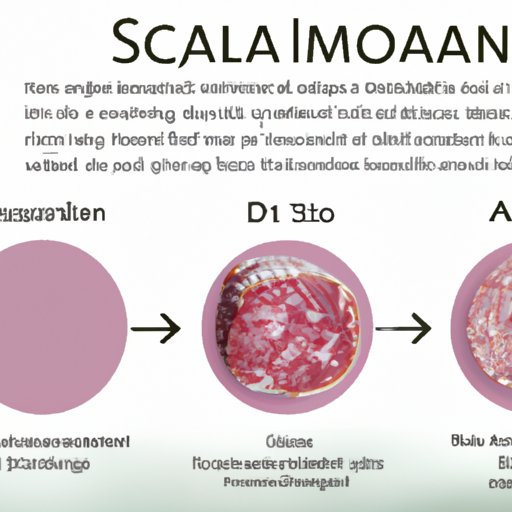Introduction
Salami is a type of cured, fermented sausage that has been popular around the world for centuries. It is made from various types of meats, including beef, pork, chicken, turkey and game, and is typically flavored with spices and herbs. It is often sliced thin and used as an ingredient in sandwiches, pizzas and other dishes. But is salami healthy? In this article, we will explore the nutritional benefits and health risks associated with consuming salami.
Analyzing the Nutritional Benefits of Eating Salami
Salami is a good source of protein, providing about 17 grams per 3-ounce (85 gram) serving. Protein is essential for growth and development, and helps build and repair cells and tissues. Salami also contains a variety of vitamins and minerals, including vitamin B12, iron, zinc and selenium. It is also an excellent source of healthy fats, including monounsaturated and polyunsaturated fatty acids. These fats are beneficial for heart health and can help reduce cholesterol levels.
However, salami is also high in saturated fat, which can raise cholesterol levels and increase the risk of heart disease. It also contains a significant amount of sodium, which can contribute to high blood pressure and other health issues. For these reasons, it is important to consume salami in moderation.

Examining the Health Risks of Eating Salami
In addition to its high fat and sodium content, there are a few other health risks associated with eating salami. First, it may contain bacteria or other pathogens, such as listeria, which can cause food poisoning. It is also possible for salami to be contaminated with nitrates or nitrites, which can be harmful when consumed in large amounts.
Another potential health risk is that salami is often made from processed meats, which have been linked to an increased risk of cancer. Processed meats are those that have been preserved through smoking, curing or adding salt or other preservatives. These meats have been linked to an increased risk of colorectal cancer, as well as other types of cancer.

Exploring the Ingredients in Different Types of Salami
The ingredients used in salami vary depending on the type of salami and the region in which it is produced. Common ingredients include beef, pork, garlic, paprika, sugar, salt, pepper and various spices. Some salamis also contain wine, brandy or other liquors. Regional variations exist, with Italian salamis often containing more garlic and herbs, while German salamis tend to be spicier.
Investigating the History and Popularity of Salami
Salami has a long history, dating back to ancient times. It was first mentioned in Homer’s Odyssey, and was widely eaten by the Romans. It became popular throughout Europe in the Middle Ages, when it was used as a way to preserve meat for long periods of time. Today, salami is still popular around the world, with different regional variations.

Comparing the Health Benefits of Salami to Other Meats
When compared to other meats, salami is relatively high in protein and vitamins and minerals, but also higher in saturated fat and sodium. For example, a 3-ounce (85 gram) serving of salami contains 17 grams of protein, compared to 21 grams in a 3-ounce (85 gram) serving of roast beef. Salami also contains more sodium than many other meats, with 590 milligrams per serving, compared to only 80 milligrams in roast beef.
When it comes to saturated fat, salami is comparable to other processed meats, such as bacon and hot dogs. However, unprocessed meats, such as lean beef and chicken breast, are lower in saturated fat. Therefore, if you are looking for a healthier option, opt for unprocessed meats instead.
Conclusion
In conclusion, salami can be a nutritious and tasty addition to your diet. It is a good source of protein, vitamins and minerals, and contains healthy fats. However, it is also high in saturated fat and sodium, which can be detrimental to health if consumed in excess. Therefore, it is important to enjoy salami in moderation and opt for unprocessed meats whenever possible.
(Note: Is this article not meeting your expectations? Do you have knowledge or insights to share? Unlock new opportunities and expand your reach by joining our authors team. Click Registration to join us and share your expertise with our readers.)
